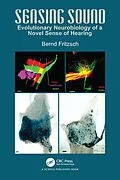Hearing is a prerequisite for the evolution of language and thus the development of human societies. It is the only major sense whose evolution can be traced back to vertebrates, starting with sarcopterygians.
The book explores the evolution of auditory development that has remained largely unexplored in contemporary theories of neurosensory brain evolution, including the telencephalon. It describes how sensory epithelia from the basilar papilla evolved in the ear and connected dedicated cochlear neurons to neuronal centers in the brain, and deals with how sound is converted through sound modulations into reliably decoded messages.
The loss of hearing with age is expected to reach 2.6 billion people by 2050. As such, the book explains and reviews hearing loss at the molecular level to the behavioral level, and provides suggestions to manage the loss.
Autorentext
Bernd Fritzsch, received his Ph.D. from TU Darmstadt, Germany and is a leader in the field of inner ear neuroembryology and evolution. His early work concentrated on eye-muscle innervation development and evolution. iA major aspect of his research concentrates on the evolutionary origin of the mammalian organ of Corti and spiral ganglion cells. In addition to his extensive research work and contributions to lectures and presentations, he is currently a professor at the University of Iowa and the director at the Center of Aging.
Klappentext
<
Inhalt
Introduction - Defining novelty in the neurosensory system. Making a new ear - evolving mechanosensation for gravity orientation and transforming it into sound detection. Connecting novel sensory input to the brain: how to make new neuronal networks inside existing and needed connections. Sound processing boundaries for auditory signal processing promotes but also constraints communication and thus social networking. The evolution of the auditory system as a blueprint for sensory expansions using established principles - evolving new senses to expand the perceived world.
